The FX 7700 always had a mystique about it which no other lion calculator had. Perhaps it was because it was Casio's top of the line in 1992 & lions never had the top of the line of anything. Perhaps it was the amazing feel of the buttons which nothing else has to this day. Perhaps it was the high contrast of its blue, passive matrix display. Maybe it was the speed it achieved.
It was all lions had through their biology days. An HP 48G came along after the engineering days started, but it was slow, had lousier buttons & had a lousier display. The HP 48G fell off a balcony & did not survive, but the Casio survives. There was always a plan to power it back up someday, but the batteries are unaffordable in today's money.
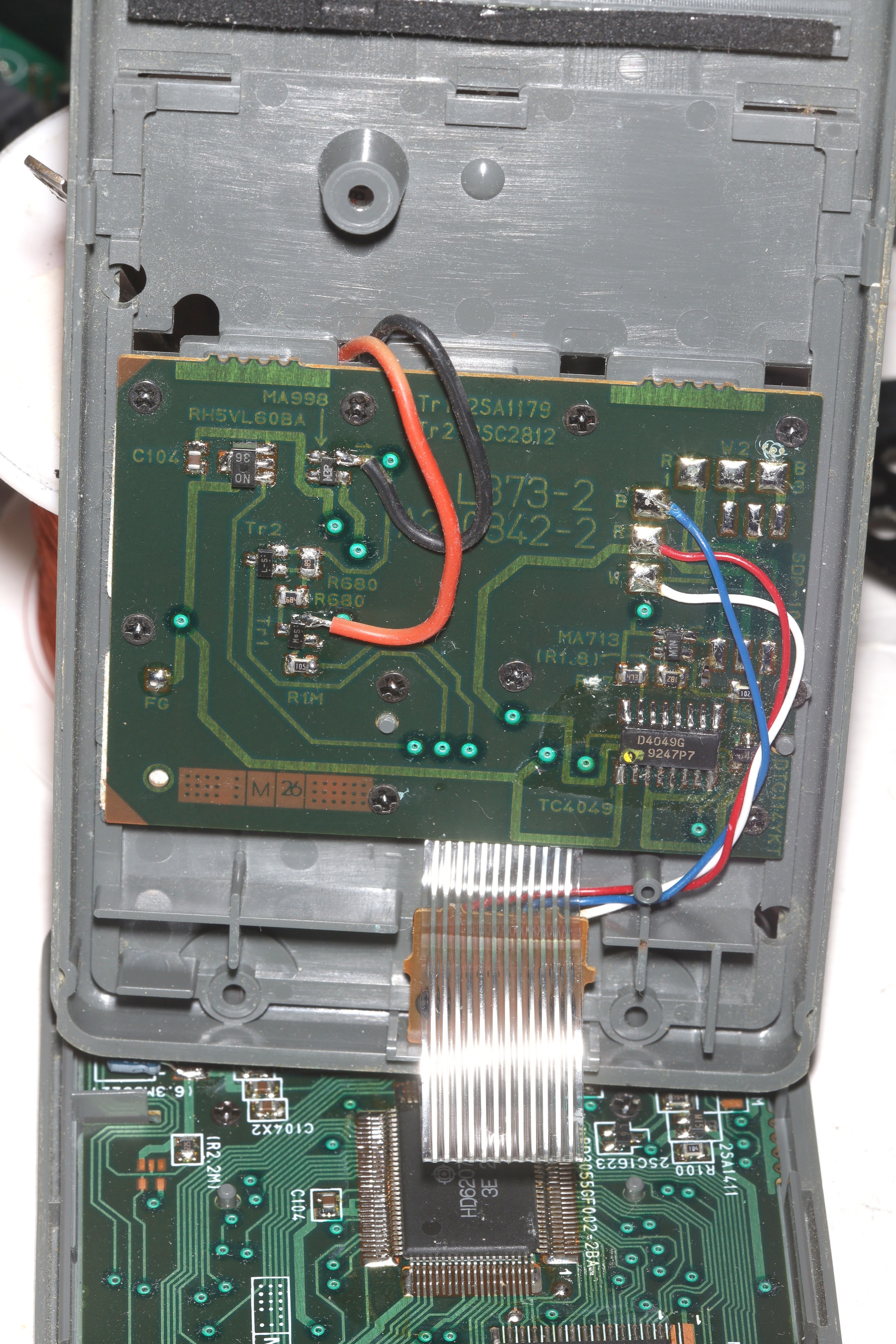
The battery bypass involves 2 obscure solder joints.
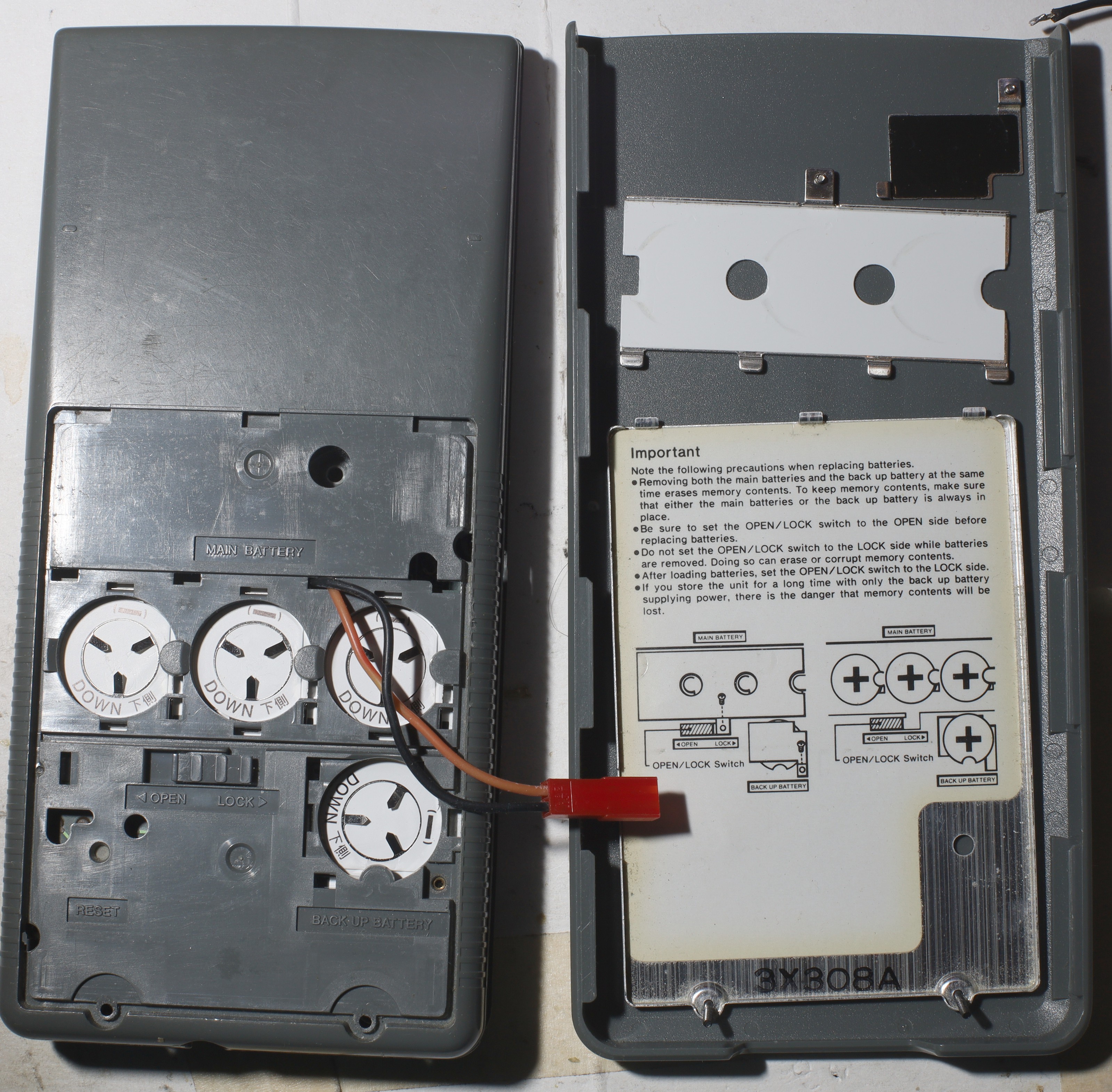
Then the battery lock must be engaged.
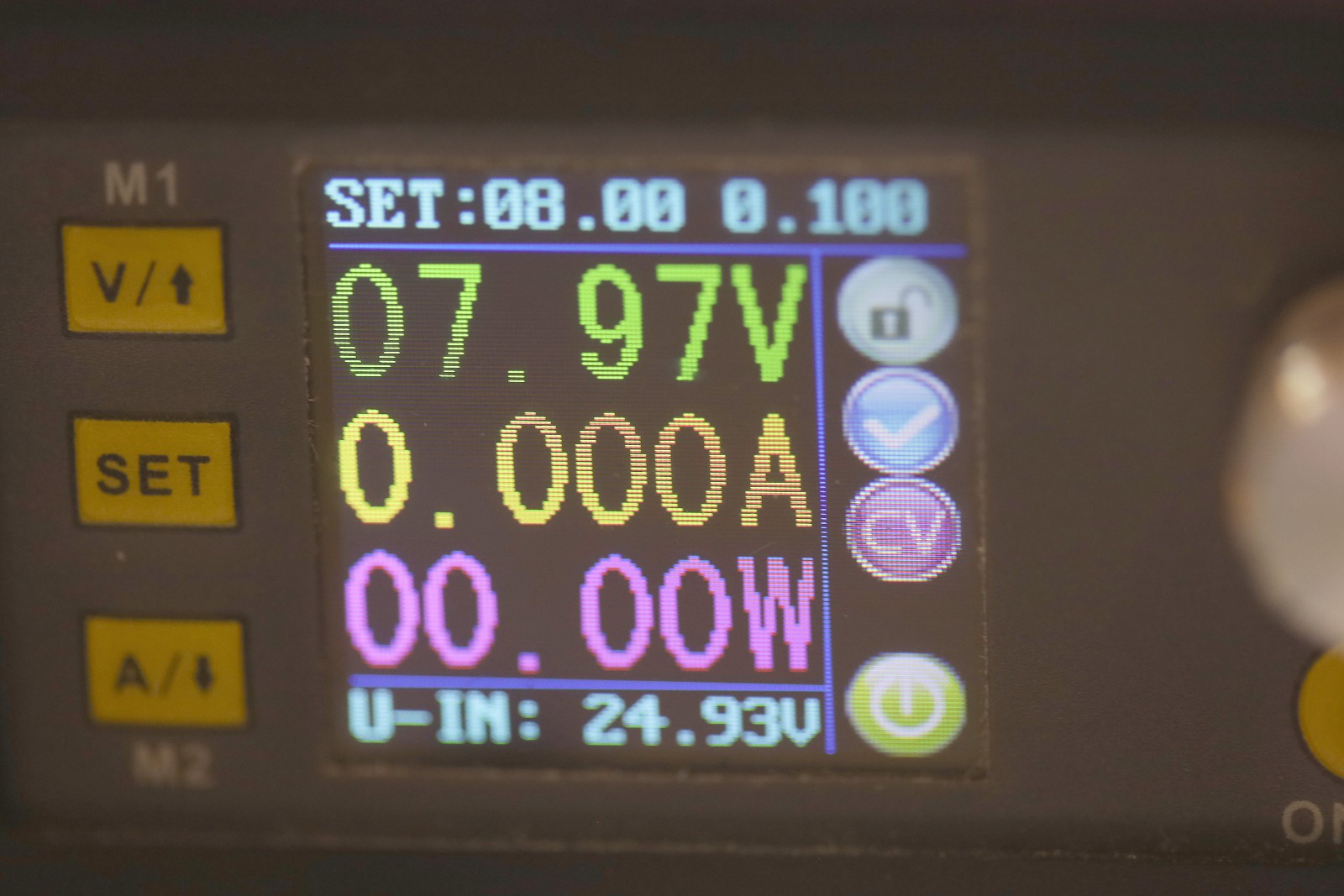
Then with 8-9V 0A applied
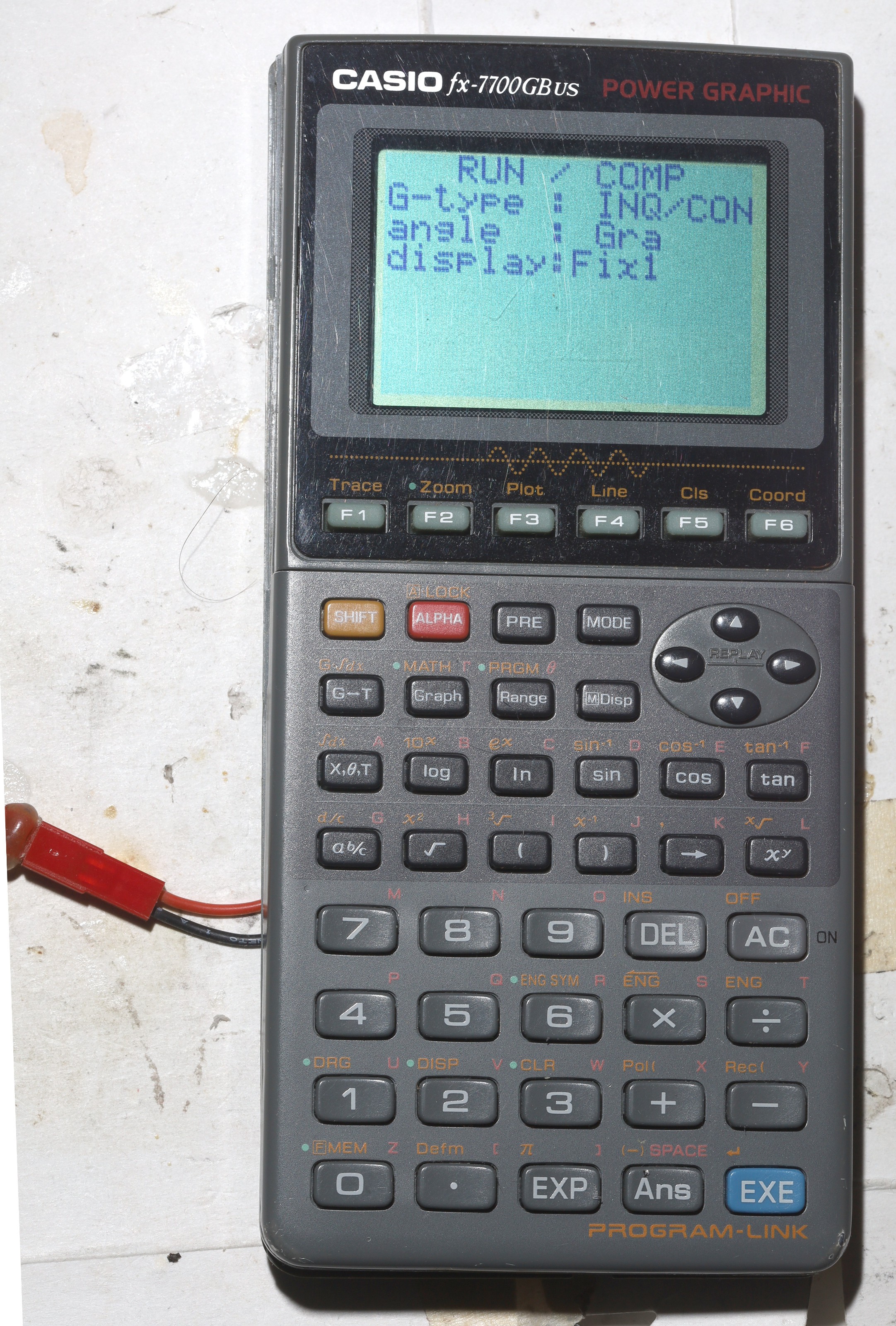
The soft blue glow appears for the 1st time in 25 years. It was last used in 1998.
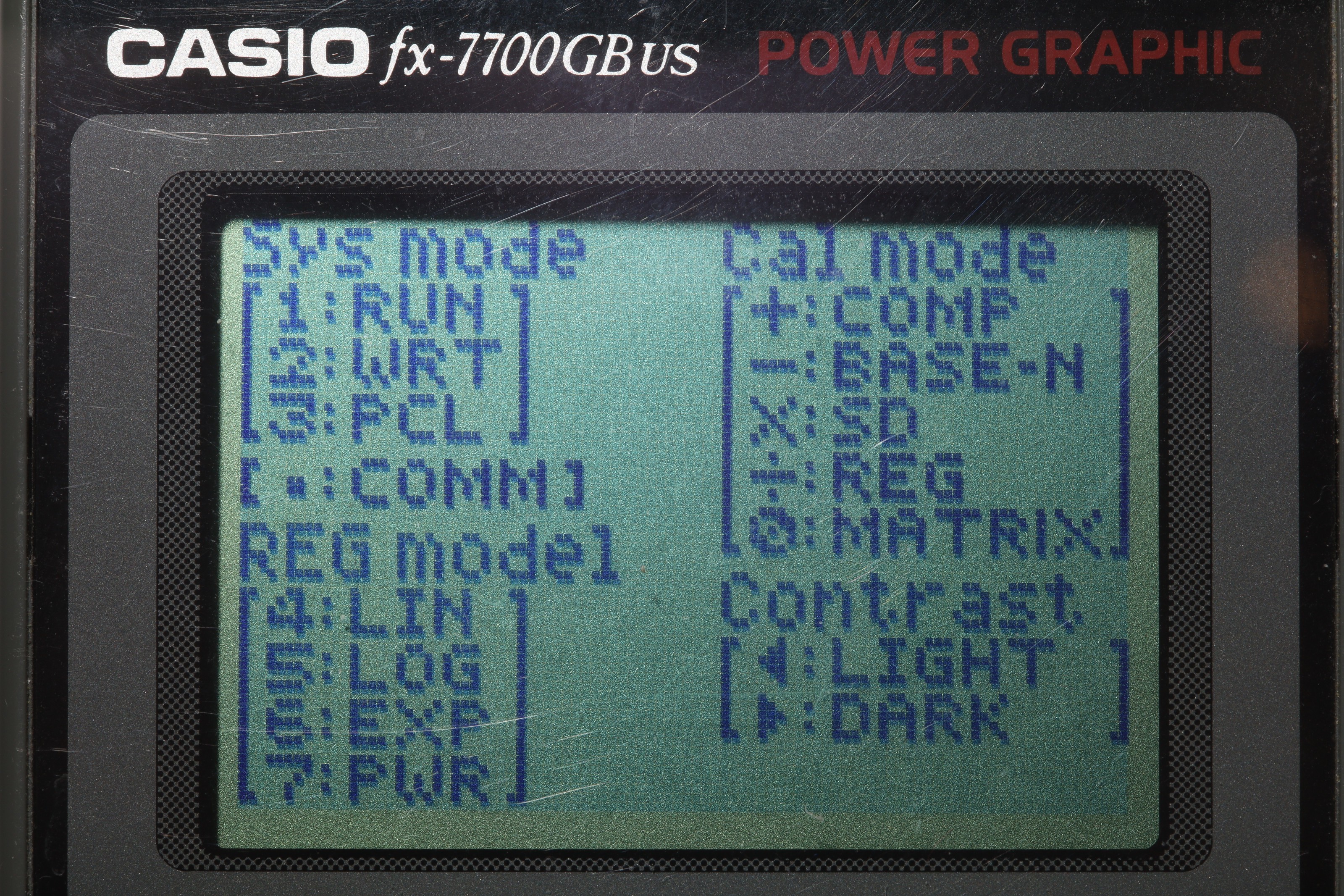
The default contrast is very faint, as it was 30 years ago. You have to mode, then right arrow to make it usable.
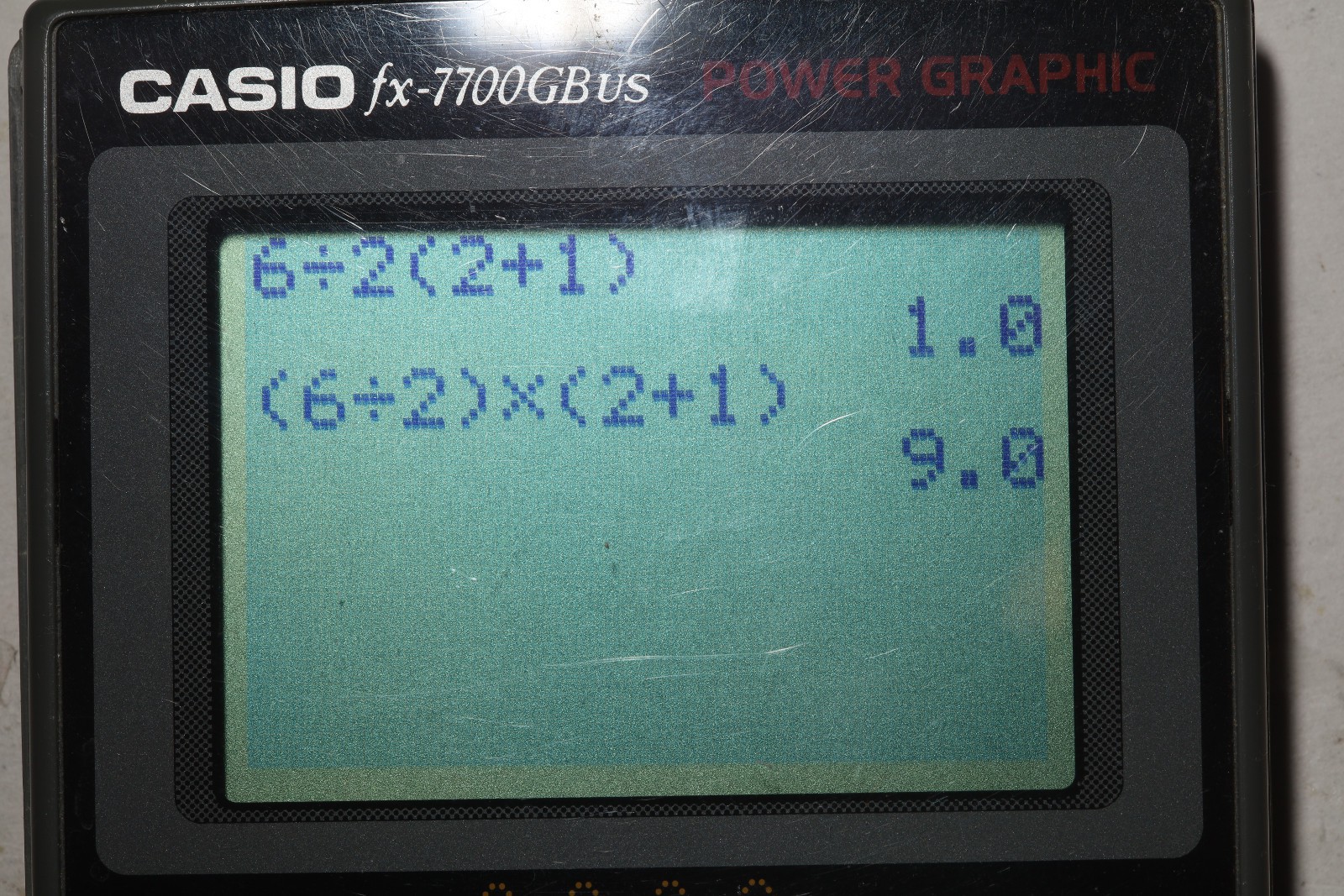
The lion kingdom quickly demoed the infamous PEMDAS ordering.

Then did a simple graph to close out this revival.
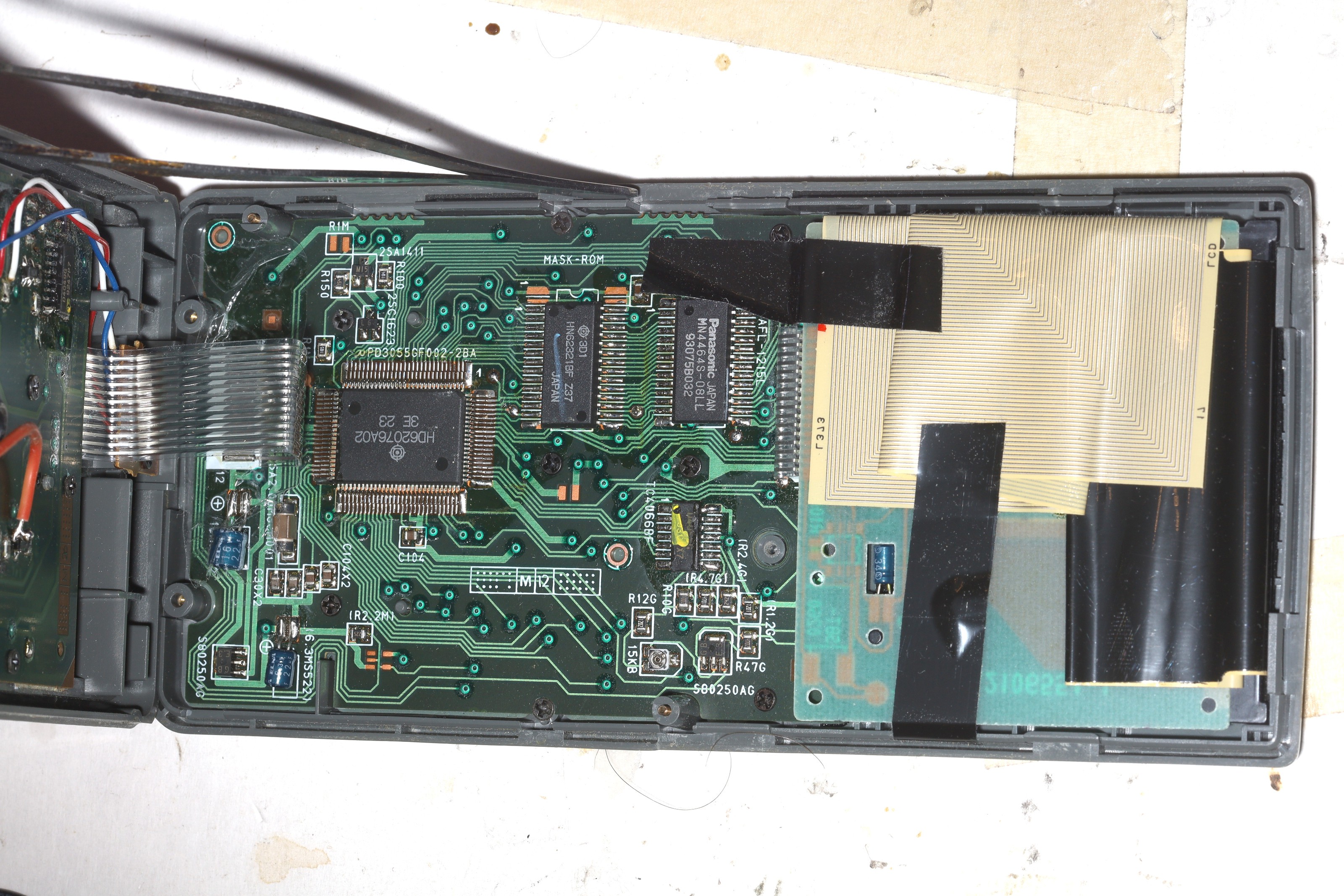
1 shocker was there were no bad rows. Lions distinctly remember 1 bad row. Perhaps the water intrusion dried out over 25 years. It's believed the original got a bad row & was replaced in 1994. There is still a memory of the replacement eventually having some kind of defect like another bad row. They were prone to having water intrusion.
Stuff was never kept around in those days for spare parts. Seem to recall trying to sell the 1st one & eventually scrapping it.
Despite the current being too low to measure, it actually chewed up CR2032's. The HP48G was much more efficient. Lions resorted to heroic measures to make those CR2032's last, bending up the pins, adding postit's to press on them.
They were somehow a joy to program, more than any language before or since. Maybe it was the novelty of programming something that small to generate useful graphics. Maybe it was the way the language was designed. Young lion painstakingly wrote down all the programs on paper. No phone cams in those days, but they might have been simple programs. Reviving the old programs would now entail bringing up the serial interface. It used a 2.5mm TRS connector. It's a basic 5V serial port.
The tip is input to the calculator. The ring is output from the calculator. The sleeve is GND.
There are some notes about Windows software for transferring files but nothing on the protocol.
 lion mclionhead
lion mclionhead
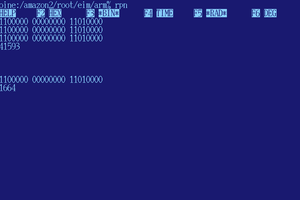

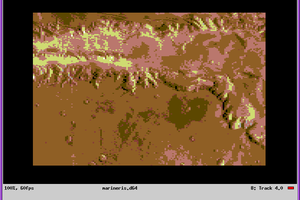
I had an FX7700G from about 1990. I don't remember it being exceptionally heavy on battery use. Fairly heavy, ok, but I'd get a few months of daily use out of it in school.
It was fun to program. I wrote a program that plotted a Sierpinski triangle. The resolution left something to be desired, but it worked!